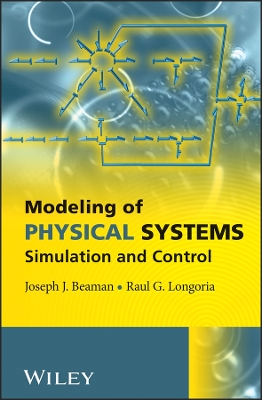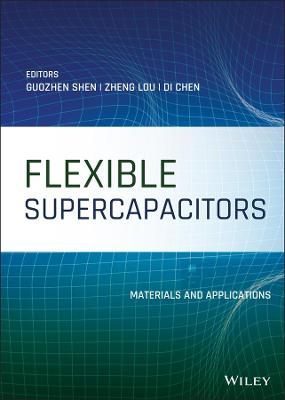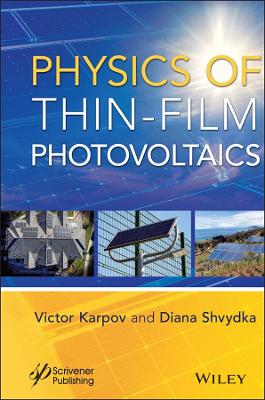Lithium-Sulfur Batteries
 -15%
portes grátis
-15%
portes grátis
Lithium-Sulfur Batteries
Wild, Mark; Offer, Gregory J.
John Wiley & Sons Inc
03/2019
352
Dura
Inglês
9781119297864
15 a 20 dias
826
Part I Materials 1
1 Electrochemical Theory and Physics 3
Geraint Minton
1.1 Overview of a LiS cell 3
1.2 The Development of the Cell Voltage 5
1.2.1 Using the Electrochemical Potential 7
1.2.2 Electrochemical Reactions 10
1.2.3 The Electric Double Layer 13
1.2.4 Reaction Equilibrium 15
1.2.5 A Finite Electrolyte 17
1.2.6 The Need for a Second Electrode 17
1.3 Allowing a Current to Flow 19
1.3.1 The Reaction Overpotential 20
1.3.2 The Transport Overpotential 21
1.3.3 General Comments on the Overpotentials 22
1.4 Additional Processes Which Define the Behavior of a LiS Cell 22
1.4.1 Multiple Electrochemical Reactions at One Surface 22
1.4.2 Chemical Reactions 23
1.4.3 Species Solubility and Indirect Reaction Effects 25
1.4.4 Transport Limitations in the Cathode 25
1.4.5 The Active Surface Area 26
1.4.6 Precipitate Accumulation 27
1.4.7 Electrolyte Viscosity, Conductivity, and Species Transport 27
1.4.8 Side Reactions and SEI Formation at the Anode 28
1.4.9 Anode Morphological Changes 29
1.4.10 Polysulfide Shuttle 29
1.5 Summary 30
References 30
2 Sulfur Cathodes 33
Holger Althues, Susanne Doerfler, Soeren Thieme, Patrick Strubel and Stefan Kaskel
2.1 Cathode Design Criteria 33
2.1.1 Overview of Cathode Components and Composition 33
2.1.2 Cathode Design: Role of Electrolyte in Sulfur Cathode Chemistry 34
2.1.3 Cathode Design: Impact on Energy Density on Cell Level 35
2.1.4 Cathode Design: Impact on Cycle Life and Self-discharge 36
2.1.5 Cathode Design: Impact on Rate Capability 37
2.2 Cathode Materials 37
2.2.1 Properties of Sulfur 37
2.2.2 Porous and Nanostructured Carbons as Conductive Cathode Scaffolds 39
2.2.2.1 Graphite-Like Carbons 39
2.2.2.2 Synthesis of Graphite-like Carbons 39
2.2.2.3 Carbon Black 40
2.2.2.4 Activated Carbons 41
2.2.2.5 Carbide-Derived Carbon 42
2.2.2.6 Hard-Template-Assisted Carbon Synthesis 42
2.2.2.7 Carbon Surface Chemistry 43
2.2.3 Carbon/Sulfur Composite Cathodes 43
2.2.3.1 Microporous Carbons 44
2.2.3.2 Mesoporous Carbons 45
2.2.3.3 Macroporous Carbons and Nanotube-based Cathode Systems 46
2.2.3.4 Hierarchical Mesoporous Carbons 47
2.2.3.5 Hierarchical Microporous Carbons 49
2.2.3.6 Hollow Carbon Spheres 50
2.2.3.7 Graphene 51
2.2.4 Retention of LiPS by Surface Modifications and Coating 51
2.2.4.1 Metal Oxides as Adsorbents for Lithium Polysulfides 56
2.3 Cathode Processing 57
2.3.1 Methods for C/S Composite Preparation 57
2.3.2 Wet (Organic, Aqueous) and Dry Coating for Cathode Production 58
2.3.3 Alternative Cathode Support Concepts (Carbon Current Collectors, Binder-free Electrodes) 59
2.3.4 Processing Perspective for Carbons, Binders, and Additives 59
2.4 Conclusions 59
References 61
3 Electrolyte for Lithium-Sulfur Batteries 71
Marzieh Barghamadi, Mustafa Musameh, Thomas Ruether, Anand I. Bhatt, Anthony F. Hollenkamp and Adam S. Best
3.1 The Case for Better Batteries 71
3.2 Li-S Battery: Origins and Principles 72
3.3 Solubility of Species and Electrochemistry 74
3.4 Liquid Electrolyte Solutions 75
3.5 Modified Liquid Electrolyte Solutions 91
3.5.1 Variation in Electrolyte Salt Concentration 91
3.5.2 Mixed Organic-Ionic Liquid Electrolyte Solutions 91
3.5.3 Ionic Liquid Electrolyte Solutions 93
3.6 Solid and Solidified Electrolyte Configurations 96
3.6.1 Polymer Electrolytes 96
3.6.1.1 Absorbed Liquid/Gelled Electrolyte 96
3.6.1.2 Solid Polymer Electrolytes 98
3.6.2 Non-polymer Solid Electrolytes 100
3.7 Challenges of the Cathode and Solvent for Device Engineering 102
3.7.1 The Cathode Loading Challenge 102
3.7.2 Cathode Wetting Challenge 104
3.8 Concluding Remarks and Outlook 108
References 111
4 Anode-Electrolyte Interface 121
Mark Wild
4.1 Introduction 121
4.2 SEI Formation 121
4.3 Anode Morphology 122
4.4 Polysulfide Shuttle 123
4.5 Electrolyte Additives for Stable SEI Formation 123
4.6 Barrier Layers on the Anode 125
4.7 A Systemic Approach 126
References 126
Part II Mechanisms 129
Reference 131
5 Molecular Level Understanding of the Interactions Between Reaction Intermediates of Li-S Energy Storage Systems and Ether Solvents 133
Rajeev S. Assary and Larry A. Curtiss
5.1 Introduction 133
5.2 Computational Details 135
5.3 Results and Discussions 135
5.3.1 Reactivity of Li-S Intermediates with Dimethoxy Ethane (DME) 136
5.3.2 Kinetic Stability of Ethers in the Presence of Lithium Polysulfide 138
5.3.3 Linear Fluorinated Ethers 140
5.4 Summary and Conclusions 144
Acknowledgments 144
References 144
6 Lithium Sulfide 147
Sylwia Walu?s
6.1 Introduction 147
6.2 Li2S as the End Discharge Product 148
6.2.1 General 148
6.2.2 Discharge Product: Li2S or Li2S2/Li2S? 151
6.2.3 A Survey of Experimental andTheoretical Findings Involving Li2S and Li2S2 Formation and Proposed Reduction Pathways 153
6.2.4 Mechanistic Insight into Li2S/Li2S2 Nucleation and Growth 157
6.2.5 Strategies to Limit Li2S Precipitation and Enhance the Capacity 160
6.2.6 Charge Mechanism and its Difficulties 161
6.3 Li2S-Based Cathodes: Toward a Li Ion System 164
6.3.1 General 164
6.3.2 Initial Activation of Li2S - Mechanism of First Charge 165
6.3.3 Recent Developments in Li2S Cathodes for Improved Performances 171
6.4 Summary 176
References 176
7 Degradation in Lithium-Sulfur Batteries 185
Rajlakshmi Purkayastha
7.1 Introduction 185
7.2 Degradation Processes Within a Lithium-Sulfur Cell 190
7.2.1 Degradation at Cathode 190
7.2.2 Degradation at Anode 194
7.2.3 Degradation in Electrolyte 197
7.2.4 Degradation Due to Operating Conditions: Temperature, C-Rates, and Pressure 200
7.2.5 Degradation Due to Geometry: Scale-Up and Topology 205
7.3 Capacity Fade Models 209
7.3.1 Dendrite Models 211
7.3.2 Equivalent Circuit Network Models 213
7.4 Methods of Detecting and Measuring Degradation 214
7.4.1 Incremental Capacity Analysis 215
7.4.2 Differential Thermal Voltammetry 215
7.4.3 Electrochemical Impedance Spectroscopy 215
7.4.4 Resistance Curves 216
7.4.5 Macroscopic Indicators 217
7.5 Methods for Countering Degradation 218
7.6 Future Direction 221
References 222
Part III Modeling 227
8 Lithium-Sulfur Model Development 229
Teng Zhang, Monica Marinescu and Gregory J. Offer
8.1 Introduction 229
8.2 Zero-Dimensional Model 231
8.2.1 Model Formulation 231
8.2.1.1 Electrochemical Reactions 231
8.2.1.2 Shuttle and Precipitation 232
8.2.1.3 Time Evolution of Species 233
8.2.1.4 Model Implementation 233
8.2.2 Basic Charge/Discharge Behaviors 233
8.3 Modeling Voltage Loss in Li-S Cells 236
8.3.1 Electrolyte Resistance 237
8.3.2 Anode Potential 238
8.3.3 Surface Passivation 239
8.3.4 Transport Limitation 240
8.4 Higher Dimensional Models 242
8.4.1 One-Dimensional Models 242
8.4.2 Multi-Scale Models 244
8.5 Summary 245
References 246
9 Battery Management Systems - State Estimation for Lithium-Sulfur Batteries 249
Daniel J. Auger, Abbas Fotouhi, Karsten Propp and Stefano Longo
9.1 Motivation 249
9.1.1 Capacity 249
9.1.2 State of Charge (SoC) 251
9.1.3 State of Health (SoH) 251
9.1.4 Limitations of Existing Battery State Estimation Techniques 252
9.1.4.1 SoC Estimation from "Coulomb Counting" 252
9.1.4.2 SoC Estimation from Open-Circuit Voltage (OCV) 253
9.1.5 Direction of Current Work 253
9.2 Experimental Environment for Li-S Algorithm Development 254
9.2.1 Pulse Discharge Tests 255
9.2.2 Driving Cycle Tests 255
9.3 State Estimation Techniques from Control Theory 256
9.3.1 Electrochemical Models 257
9.3.2 Equivalent Circuit Network (ECN) Models 258
9.3.3 Kalman Filters and Their Derivatives 259
9.4 State Estimation Techniques from Computer Science 261
9.4.1 ANFIS as a Modeling Tool 261
9.4.2 Human Knowledge and Fuzzy Inference Systems (FIS) 263
9.4.3 Adaptive Neuro-Fuzzy Inference Systems 266
9.4.4 State-of-Charge Estimation Using ANFIS 268
9.5 Conclusions and Further Directions 269
Acknowledgments 270
References 270
Part IV Application 273
10 Commercial Markets for Li-S 275
Mark Crittenden
10.1 Technology Strengths Meet Market Needs 275
10.1.1 Weight 275
10.1.2 Safety 276
10.1.3 Cost 276
10.1.4 Temperature Tolerance 276
10.1.5 Shipment and Storage 277
10.1.6 Power Characteristics 277
10.1.7 Environmentally Friendly Technology (Clean Tech) 278
10.1.8 Pressure Tolerance 278
10.1.9 Control 278
10.2 Electric Aircraft 278
10.3 Satellites 280
10.4 Cars 280
10.5 Buses 282
10.6 Trucks 283
10.7 Electric Scooter and Electric Bikes 284
10.8 Marine 285
10.9 Energy Storage 285
10.10 Low-Temperature Applications 286
10.11 Defense 286
10.12 Looking Ahead 286
10.13 Conclusion 287
11 Battery Engineering 289
Gregory J. Offer
11.1 Mechanical Considerations 289
11.2 Thermal and Electrical Considerations 289
References 292
12 Case Study 293
Paul Brooks
12.1 Introduction 293
12.2 A Potted History of Eternal Solar Flight 293
12.3 Why Has It Been So Difficult? 295
12.4 Objectives of HALE UAV 297
12.4.1 Stay Above the Cloud 298
12.4.2 Stay Above the Wind 298
12.4.3 Stay in the Sun 299
12.4.4 Year-Round Markets 300
12.4.5 Seasonal Markets 303
12.4.6 How Valuable Are These Markets and What Does That Mean for the Battery? 303
12.5 Worked Example - HALE UAV 303
12.6 Cells, Batteries, and Real Life 305
12.6.1 Cycle Life, Charge, and Discharge Rates 305
12.6.2 Payload 306
12.6.3 Avionics 306
12.6.4 Temperature 306
12.6.5 End-of-Life Performance 306
12.6.6 Protection 306
12.6.7 Balancing - Useful Capacity 307
12.6.8 Summary of Real-World Issues 307
12.7 A Quick Aside on Regenerative Fuel Cells 308
12.8 So What Do We Need from Our Battery Suppliers? 309
12.9 The Challenges for Battery Developers 310
12.10 The Answer to the Title 310
12.11 Summary 310
Acknowledgments 311
References 311
Index 313
Part I Materials 1
1 Electrochemical Theory and Physics 3
Geraint Minton
1.1 Overview of a LiS cell 3
1.2 The Development of the Cell Voltage 5
1.2.1 Using the Electrochemical Potential 7
1.2.2 Electrochemical Reactions 10
1.2.3 The Electric Double Layer 13
1.2.4 Reaction Equilibrium 15
1.2.5 A Finite Electrolyte 17
1.2.6 The Need for a Second Electrode 17
1.3 Allowing a Current to Flow 19
1.3.1 The Reaction Overpotential 20
1.3.2 The Transport Overpotential 21
1.3.3 General Comments on the Overpotentials 22
1.4 Additional Processes Which Define the Behavior of a LiS Cell 22
1.4.1 Multiple Electrochemical Reactions at One Surface 22
1.4.2 Chemical Reactions 23
1.4.3 Species Solubility and Indirect Reaction Effects 25
1.4.4 Transport Limitations in the Cathode 25
1.4.5 The Active Surface Area 26
1.4.6 Precipitate Accumulation 27
1.4.7 Electrolyte Viscosity, Conductivity, and Species Transport 27
1.4.8 Side Reactions and SEI Formation at the Anode 28
1.4.9 Anode Morphological Changes 29
1.4.10 Polysulfide Shuttle 29
1.5 Summary 30
References 30
2 Sulfur Cathodes 33
Holger Althues, Susanne Doerfler, Soeren Thieme, Patrick Strubel and Stefan Kaskel
2.1 Cathode Design Criteria 33
2.1.1 Overview of Cathode Components and Composition 33
2.1.2 Cathode Design: Role of Electrolyte in Sulfur Cathode Chemistry 34
2.1.3 Cathode Design: Impact on Energy Density on Cell Level 35
2.1.4 Cathode Design: Impact on Cycle Life and Self-discharge 36
2.1.5 Cathode Design: Impact on Rate Capability 37
2.2 Cathode Materials 37
2.2.1 Properties of Sulfur 37
2.2.2 Porous and Nanostructured Carbons as Conductive Cathode Scaffolds 39
2.2.2.1 Graphite-Like Carbons 39
2.2.2.2 Synthesis of Graphite-like Carbons 39
2.2.2.3 Carbon Black 40
2.2.2.4 Activated Carbons 41
2.2.2.5 Carbide-Derived Carbon 42
2.2.2.6 Hard-Template-Assisted Carbon Synthesis 42
2.2.2.7 Carbon Surface Chemistry 43
2.2.3 Carbon/Sulfur Composite Cathodes 43
2.2.3.1 Microporous Carbons 44
2.2.3.2 Mesoporous Carbons 45
2.2.3.3 Macroporous Carbons and Nanotube-based Cathode Systems 46
2.2.3.4 Hierarchical Mesoporous Carbons 47
2.2.3.5 Hierarchical Microporous Carbons 49
2.2.3.6 Hollow Carbon Spheres 50
2.2.3.7 Graphene 51
2.2.4 Retention of LiPS by Surface Modifications and Coating 51
2.2.4.1 Metal Oxides as Adsorbents for Lithium Polysulfides 56
2.3 Cathode Processing 57
2.3.1 Methods for C/S Composite Preparation 57
2.3.2 Wet (Organic, Aqueous) and Dry Coating for Cathode Production 58
2.3.3 Alternative Cathode Support Concepts (Carbon Current Collectors, Binder-free Electrodes) 59
2.3.4 Processing Perspective for Carbons, Binders, and Additives 59
2.4 Conclusions 59
References 61
3 Electrolyte for Lithium-Sulfur Batteries 71
Marzieh Barghamadi, Mustafa Musameh, Thomas Ruether, Anand I. Bhatt, Anthony F. Hollenkamp and Adam S. Best
3.1 The Case for Better Batteries 71
3.2 Li-S Battery: Origins and Principles 72
3.3 Solubility of Species and Electrochemistry 74
3.4 Liquid Electrolyte Solutions 75
3.5 Modified Liquid Electrolyte Solutions 91
3.5.1 Variation in Electrolyte Salt Concentration 91
3.5.2 Mixed Organic-Ionic Liquid Electrolyte Solutions 91
3.5.3 Ionic Liquid Electrolyte Solutions 93
3.6 Solid and Solidified Electrolyte Configurations 96
3.6.1 Polymer Electrolytes 96
3.6.1.1 Absorbed Liquid/Gelled Electrolyte 96
3.6.1.2 Solid Polymer Electrolytes 98
3.6.2 Non-polymer Solid Electrolytes 100
3.7 Challenges of the Cathode and Solvent for Device Engineering 102
3.7.1 The Cathode Loading Challenge 102
3.7.2 Cathode Wetting Challenge 104
3.8 Concluding Remarks and Outlook 108
References 111
4 Anode-Electrolyte Interface 121
Mark Wild
4.1 Introduction 121
4.2 SEI Formation 121
4.3 Anode Morphology 122
4.4 Polysulfide Shuttle 123
4.5 Electrolyte Additives for Stable SEI Formation 123
4.6 Barrier Layers on the Anode 125
4.7 A Systemic Approach 126
References 126
Part II Mechanisms 129
Reference 131
5 Molecular Level Understanding of the Interactions Between Reaction Intermediates of Li-S Energy Storage Systems and Ether Solvents 133
Rajeev S. Assary and Larry A. Curtiss
5.1 Introduction 133
5.2 Computational Details 135
5.3 Results and Discussions 135
5.3.1 Reactivity of Li-S Intermediates with Dimethoxy Ethane (DME) 136
5.3.2 Kinetic Stability of Ethers in the Presence of Lithium Polysulfide 138
5.3.3 Linear Fluorinated Ethers 140
5.4 Summary and Conclusions 144
Acknowledgments 144
References 144
6 Lithium Sulfide 147
Sylwia Walu?s
6.1 Introduction 147
6.2 Li2S as the End Discharge Product 148
6.2.1 General 148
6.2.2 Discharge Product: Li2S or Li2S2/Li2S? 151
6.2.3 A Survey of Experimental andTheoretical Findings Involving Li2S and Li2S2 Formation and Proposed Reduction Pathways 153
6.2.4 Mechanistic Insight into Li2S/Li2S2 Nucleation and Growth 157
6.2.5 Strategies to Limit Li2S Precipitation and Enhance the Capacity 160
6.2.6 Charge Mechanism and its Difficulties 161
6.3 Li2S-Based Cathodes: Toward a Li Ion System 164
6.3.1 General 164
6.3.2 Initial Activation of Li2S - Mechanism of First Charge 165
6.3.3 Recent Developments in Li2S Cathodes for Improved Performances 171
6.4 Summary 176
References 176
7 Degradation in Lithium-Sulfur Batteries 185
Rajlakshmi Purkayastha
7.1 Introduction 185
7.2 Degradation Processes Within a Lithium-Sulfur Cell 190
7.2.1 Degradation at Cathode 190
7.2.2 Degradation at Anode 194
7.2.3 Degradation in Electrolyte 197
7.2.4 Degradation Due to Operating Conditions: Temperature, C-Rates, and Pressure 200
7.2.5 Degradation Due to Geometry: Scale-Up and Topology 205
7.3 Capacity Fade Models 209
7.3.1 Dendrite Models 211
7.3.2 Equivalent Circuit Network Models 213
7.4 Methods of Detecting and Measuring Degradation 214
7.4.1 Incremental Capacity Analysis 215
7.4.2 Differential Thermal Voltammetry 215
7.4.3 Electrochemical Impedance Spectroscopy 215
7.4.4 Resistance Curves 216
7.4.5 Macroscopic Indicators 217
7.5 Methods for Countering Degradation 218
7.6 Future Direction 221
References 222
Part III Modeling 227
8 Lithium-Sulfur Model Development 229
Teng Zhang, Monica Marinescu and Gregory J. Offer
8.1 Introduction 229
8.2 Zero-Dimensional Model 231
8.2.1 Model Formulation 231
8.2.1.1 Electrochemical Reactions 231
8.2.1.2 Shuttle and Precipitation 232
8.2.1.3 Time Evolution of Species 233
8.2.1.4 Model Implementation 233
8.2.2 Basic Charge/Discharge Behaviors 233
8.3 Modeling Voltage Loss in Li-S Cells 236
8.3.1 Electrolyte Resistance 237
8.3.2 Anode Potential 238
8.3.3 Surface Passivation 239
8.3.4 Transport Limitation 240
8.4 Higher Dimensional Models 242
8.4.1 One-Dimensional Models 242
8.4.2 Multi-Scale Models 244
8.5 Summary 245
References 246
9 Battery Management Systems - State Estimation for Lithium-Sulfur Batteries 249
Daniel J. Auger, Abbas Fotouhi, Karsten Propp and Stefano Longo
9.1 Motivation 249
9.1.1 Capacity 249
9.1.2 State of Charge (SoC) 251
9.1.3 State of Health (SoH) 251
9.1.4 Limitations of Existing Battery State Estimation Techniques 252
9.1.4.1 SoC Estimation from "Coulomb Counting" 252
9.1.4.2 SoC Estimation from Open-Circuit Voltage (OCV) 253
9.1.5 Direction of Current Work 253
9.2 Experimental Environment for Li-S Algorithm Development 254
9.2.1 Pulse Discharge Tests 255
9.2.2 Driving Cycle Tests 255
9.3 State Estimation Techniques from Control Theory 256
9.3.1 Electrochemical Models 257
9.3.2 Equivalent Circuit Network (ECN) Models 258
9.3.3 Kalman Filters and Their Derivatives 259
9.4 State Estimation Techniques from Computer Science 261
9.4.1 ANFIS as a Modeling Tool 261
9.4.2 Human Knowledge and Fuzzy Inference Systems (FIS) 263
9.4.3 Adaptive Neuro-Fuzzy Inference Systems 266
9.4.4 State-of-Charge Estimation Using ANFIS 268
9.5 Conclusions and Further Directions 269
Acknowledgments 270
References 270
Part IV Application 273
10 Commercial Markets for Li-S 275
Mark Crittenden
10.1 Technology Strengths Meet Market Needs 275
10.1.1 Weight 275
10.1.2 Safety 276
10.1.3 Cost 276
10.1.4 Temperature Tolerance 276
10.1.5 Shipment and Storage 277
10.1.6 Power Characteristics 277
10.1.7 Environmentally Friendly Technology (Clean Tech) 278
10.1.8 Pressure Tolerance 278
10.1.9 Control 278
10.2 Electric Aircraft 278
10.3 Satellites 280
10.4 Cars 280
10.5 Buses 282
10.6 Trucks 283
10.7 Electric Scooter and Electric Bikes 284
10.8 Marine 285
10.9 Energy Storage 285
10.10 Low-Temperature Applications 286
10.11 Defense 286
10.12 Looking Ahead 286
10.13 Conclusion 287
11 Battery Engineering 289
Gregory J. Offer
11.1 Mechanical Considerations 289
11.2 Thermal and Electrical Considerations 289
References 292
12 Case Study 293
Paul Brooks
12.1 Introduction 293
12.2 A Potted History of Eternal Solar Flight 293
12.3 Why Has It Been So Difficult? 295
12.4 Objectives of HALE UAV 297
12.4.1 Stay Above the Cloud 298
12.4.2 Stay Above the Wind 298
12.4.3 Stay in the Sun 299
12.4.4 Year-Round Markets 300
12.4.5 Seasonal Markets 303
12.4.6 How Valuable Are These Markets and What Does That Mean for the Battery? 303
12.5 Worked Example - HALE UAV 303
12.6 Cells, Batteries, and Real Life 305
12.6.1 Cycle Life, Charge, and Discharge Rates 305
12.6.2 Payload 306
12.6.3 Avionics 306
12.6.4 Temperature 306
12.6.5 End-of-Life Performance 306
12.6.6 Protection 306
12.6.7 Balancing - Useful Capacity 307
12.6.8 Summary of Real-World Issues 307
12.7 A Quick Aside on Regenerative Fuel Cells 308
12.8 So What Do We Need from Our Battery Suppliers? 309
12.9 The Challenges for Battery Developers 310
12.10 The Answer to the Title 310
12.11 Summary 310
Acknowledgments 311
References 311
Index 313
















